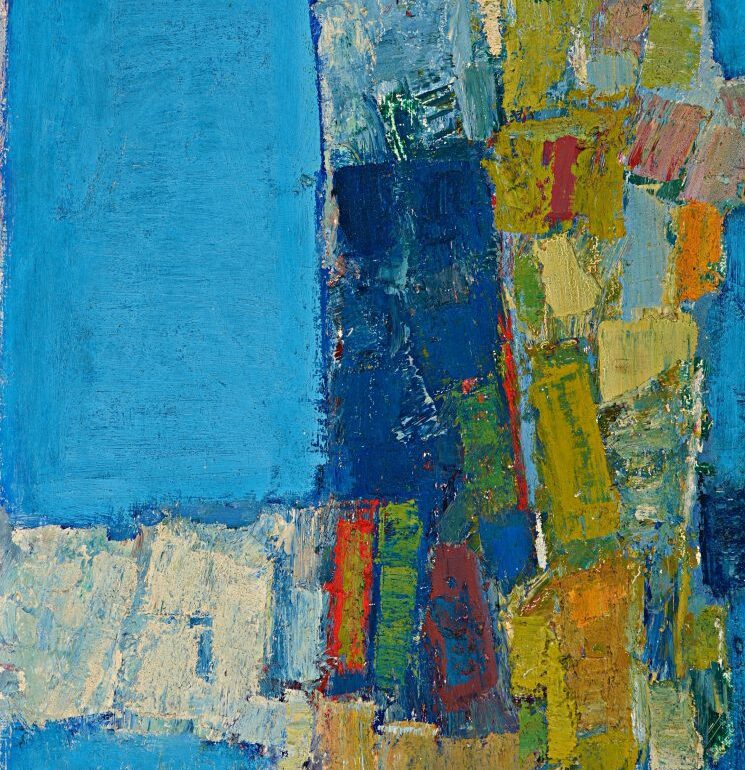For more than two decades, Diane Vitale has helped steward the estate of artist and original member of the Beatles, Stuart Sutcliffe. At its heart is a collection that numbers hundreds of objects, comprising artworks, letters, notes, photographs, memorabilia, and other ephemera. “It really goes on and on,” she said of its contents, which document Sutcliffe’s life and work in vivid detail. But now, Vitale is ready to let it all go.
The Sutcliffe estate is currently seeking a buyer to acquire its entire collection—a trove that doesn’t just capture an abstract artist in bloom, but logs the formation of one of the world’s most beloved bands. It promises to be a goldmine for art as much as music historians, if they’ll bite.
“To be very honest with you, I’d love to give that responsibility to someone else,” Vitale told me over the phone, speaking about the management of a repository that consumes most of her days.
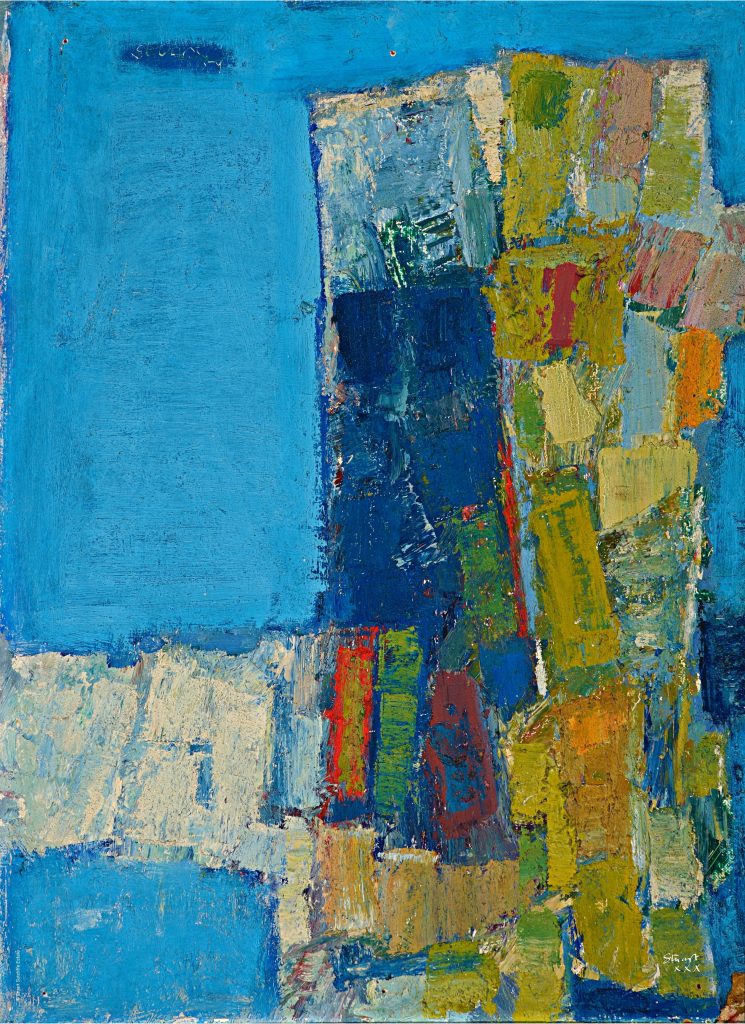
Stuart Sutcliffe, Confidence. © Stuart Sutcliffe Estate.
The collection was begun and built by Sutcliffe’s younger sister, Pauline Sutcliffe, over the decades following his untimely death in the 1960s. Her main goal, Vitale emphasized, was to establish her brother as an artist apart from the Beatles. This, she accomplished with exhibitions of his work, the 2001 book The Beatles’ Shadow, and Sutcliffe’s inclusion in Cleveland’s Rock and Roll Hall of Fame.
Pauline died in 2019. Since then, Vitale has been single-handedly administering the estate as CEO and fulfilling Pauline’s other wish: to keep the collection intact. It remains top of mind as she embarks on its sale.
“I’d like to keep it together,” she said. “That was Pauline’s dream from the very beginning.”
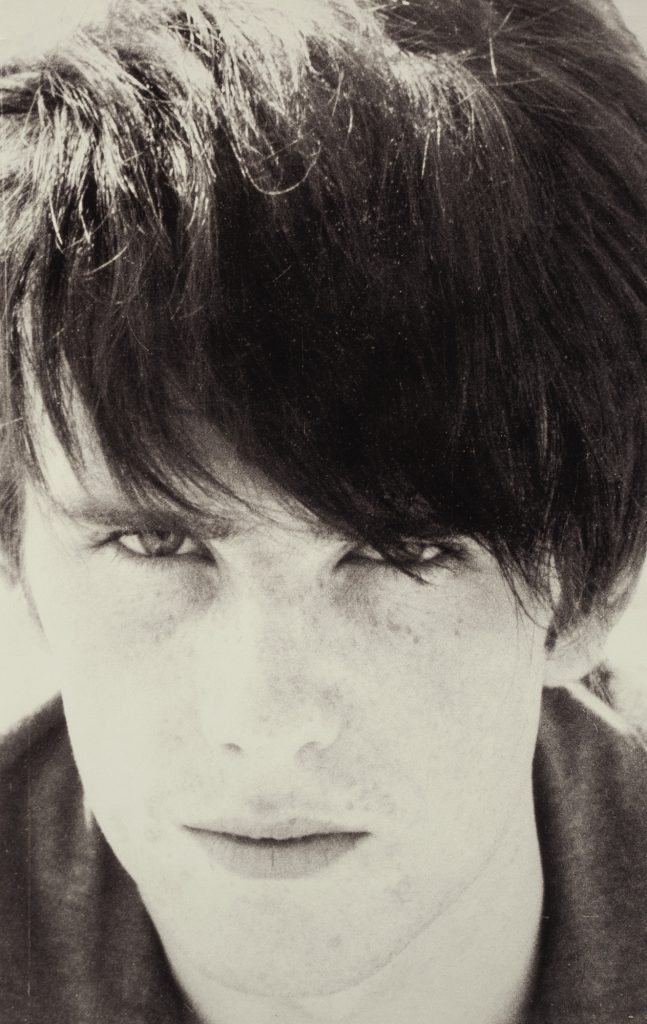
Stuart Sutcliffe. © Stuart Sutcliffe Estate.
Sutcliffe was born in 1940 in Edinburgh, Scotland, before his father relocated the family to Liverpool, the U.K., to seek work ahead of the war. At 16, he attended the Liverpool College of Art, excelling in painting and befriending one John Lennon. The pair became close companions: as students, they shared an apartment which they painted yellow and black on a lark. Their bond was such that another friend, Paul McCartney, grew jealous.
“I looked up to Stu. I depended on him to tell me the truth,” Lennon once reflected. “Stu would tell me if something was good and I’d believe him.”
Early in 1960, Lennon and McCartney convinced Sutcliffe to purchase a bass guitar using the proceeds from a painting he’d sold, and join their rock ‘n’ roll band. Originally dubbed the Quarrymen, the group was renamed the Beatals at Sutcliffe’s suggestion, then Silver Beatles, then simply, the Beatles. By August, they had landed in Hamburg, Germany, for a three-month club residency. There, their 17-year-old guitarist George Harrison was deported for being underage, McCartney and drummer Pete Best were arrested for light arson, and Sutcliffe fell in love.
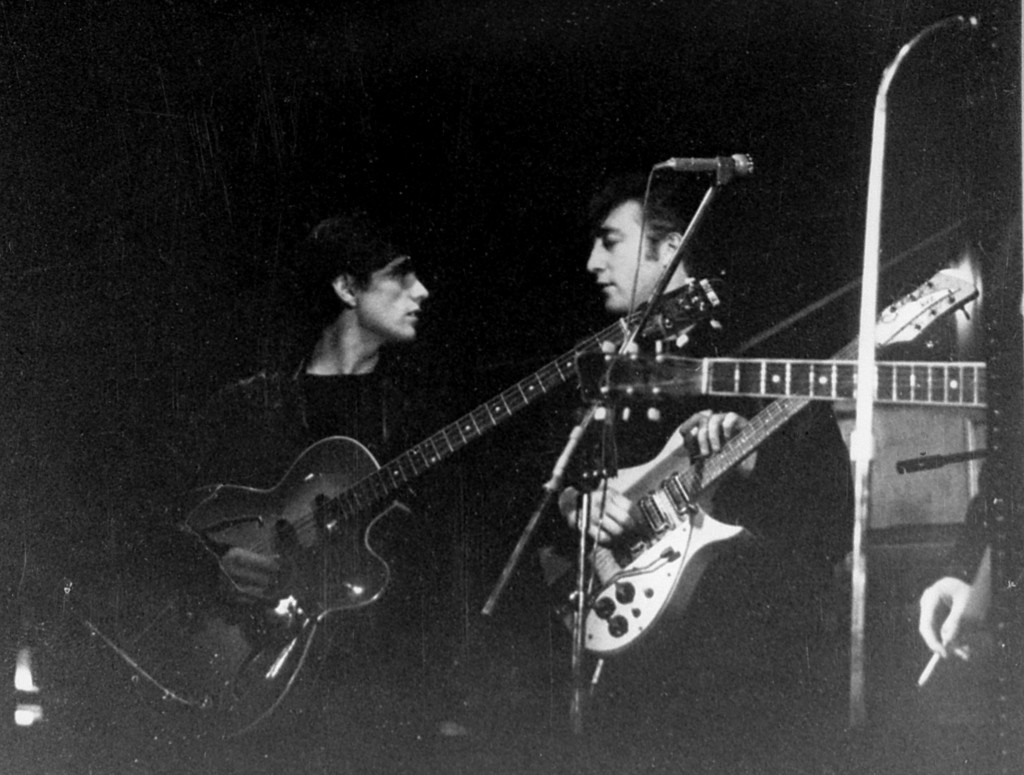
Stuart Sutcliffe onstage with John Lennon in Hamburg, Germany, 1961. Photo courtesy of Pauline Sutcliffe, supplied by Pacificcoastnews.com.
Photographer Astrid Kirchherr was in the audience at one of the Beatles’s club gigs, where she was bowled over by their raucous set. “All I wanted was to be with them and to know them,” she recalled. And she did: Kirchherr shot some of the earliest photographs of the leather-clad band with her Rolleicord camera. She also began dating Sutcliffe; the couple was engaged by the end of 1960.
Inspired by the beatnik Kirchherr, Sutcliffe opted to rededicate himself to art. He left the Beatles and Liverpool, moved in with the Kirchherr family, and began attending classes at the Hamburg College of Art under the tutelage of sculptor Eduardo Paolozzi. But, alas, not for long: in April 1962, Sutcliffe suffered a brain hemorrhage and died in Kirchherr’s arms, in an ambulance en route to a hospital. He was 21.
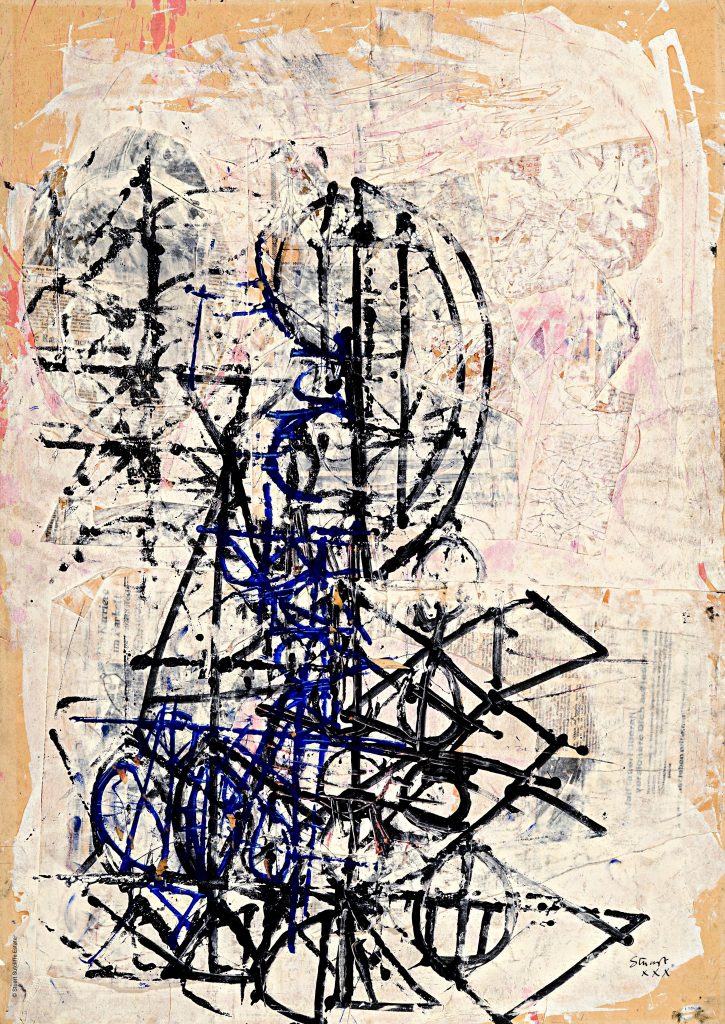
A mixed media collage by Stuart Sutcliffe. © Stuart Sutcliffe Estate.
In the years following his death, Sutcliffe’s sister has assiduously amassed an archive in his name. Today, it encompasses some 400 paintings, sketches, and drawings, and 200 other artifacts. Among them, the artworks reveal Sutcliffe’s burgeoning abstract and figurative style across life studies and densely impasto-ed canvases. Other objects bear out his fastidious record-keeping. There are his hand-drawn maps of London galleries, as well as an historic letter in which the band name “The Quarryman” is scratched out and filled in with “Beatals” in Sutcliffe’s hand.
However valuable such a collection, Vitale told me, “the weight of managing an estate is heavy.”
Around 1999, Pauline Sutcliffe, then running a thriving practice as a psychotherapist, decided to sell the estate. “I would feel then that I had done my bit and would be able to free myself from the Beatles,” she wrote in The Beatles’ Shadow. “I have been trapped by them most of my life—I wanted to say goodbye.”
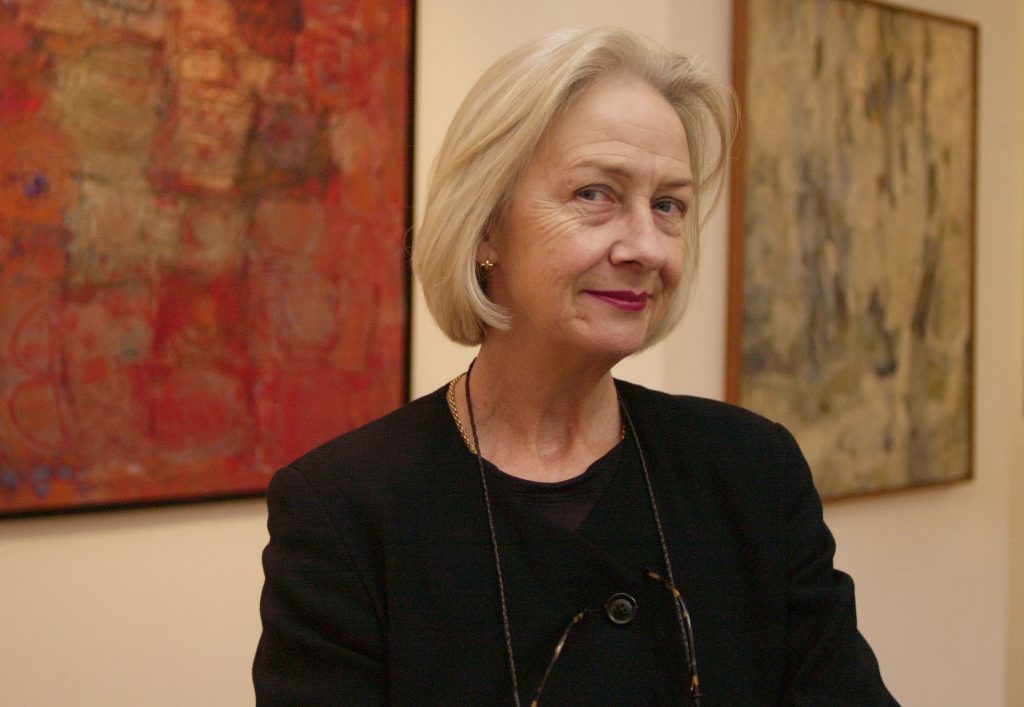
Pauline Sutcliffe, alongside her brother’s artworks on view at Proud Gallery Central in London, 2001. Photo: Johnny Green – PA Images via Getty Images.
She had planned to auction the collection through Fleetwood Owen, an entertainment auction house co-founded by Mick Fleetwood of Fleetwood Mac fame. The sale never got off the ground. Still, she found cause for reevaluation, said Vitale, following the success of and interest in her book: “Pauline later reflected that it was a sign she should work to keep the collection together and find one home for it.”
Though initially based in Liverpool, the collection moved with Pauline when she relocated to New York around 2003, when Vitale began working with the estate. It is stored in a 10-by-15-foot room in East Hampton, when not rolled out for exhibitions. Among its many outings were retrospectives at the Rock and Roll Hall of Fame and Museum in Cleveland, Victoria Gallery & Museum in Liverpool, and Stavanger Museum in Norway. More recently, in 2019, “Artistic License: Six Takes on the Guggenheim Collection” at the Guggenheim Museum in New York included two Sutcliffe paintings, handpicked by Richard Prince.
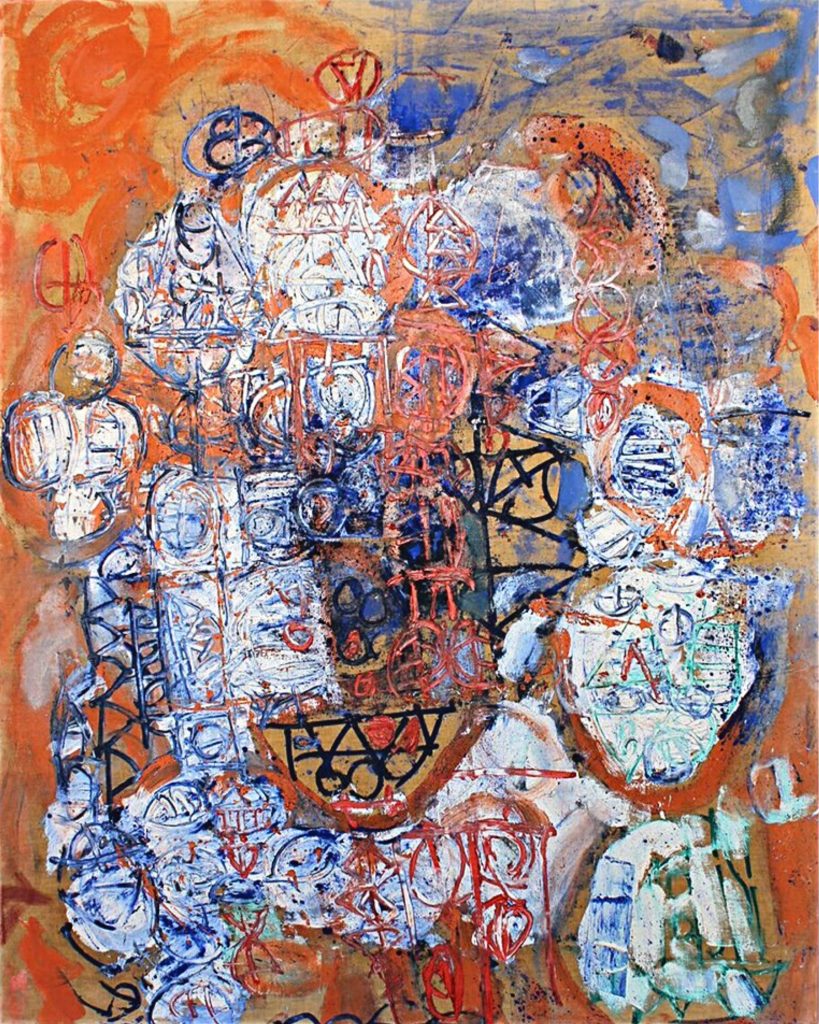
A painting by Stuart Sutcliffe. © Stuart Sutcliffe Estate.
Since announcing her intention to sell the collection on January 23, Vitale said she has been inundated by interest. Auction houses have called, as have institutions such as the Beatles Story Museum in Liverpool. She won’t disclose how much she’s asking for the archive—she’s keeping her options open. “I’m willing to speak to anyone who’s serious,” she added.
While the best scenario would be to keep the collection together, Vitale sees herself making “concessions” depending on the proposals she receives. “It would be nice if it stayed together,” she said. “But it might be that the artifacts could go to a museum or university, then the major art, about 150 pieces that have been widely exhibited, would go to a collector. That’s probably realistic.”
Even without its collection, the Stuart Sutcliffe estate will continue to bolster the artist’s legacy. Various projects are in the works, according to Vitale, not limited to a digital showcase of Sutcliffe’s work at the Beatles Story, a theatrical production based on his life, and a fellowship or scholarship award in his name. She also discussed the possibility of updating The Beatles’ Shadow for a TV adaptation.
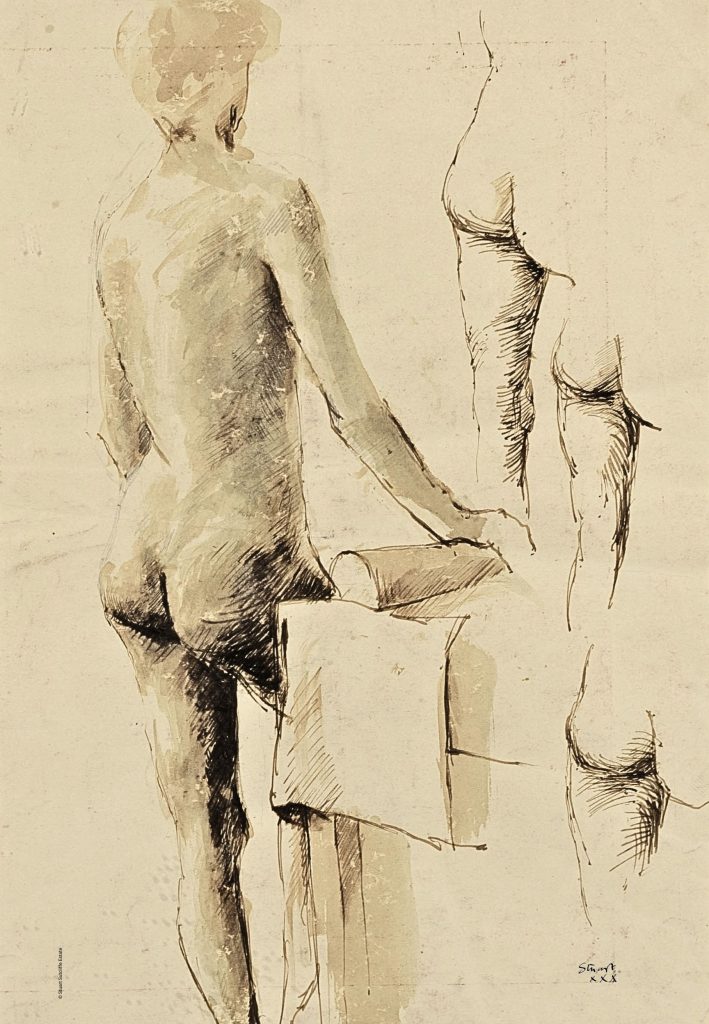
A life study drawing of model June Furlong, by Stuart Sutcliffe. © Stuart Sutcliffe Estate.
For her part, Vitale, once freed of managing, housing, insuring, and maintaining the collection, hopes to tend to her personal pursuits. One of them is writing—perhaps even a book on her experiences overseeing the Sutcliffe estate and encountering his fans (including, surprisingly, one of the artist’s life drawing models). The timing, she said, is right.
“I am a woman of faith, so I’m just standing on faith that the right person is going to come at the right time,” said Vitale. “I’m at a point in my life where I’d like to do some of my own dreams.”
Follow Artnet News on Facebook:
Want to stay ahead of the art world? Subscribe to our newsletter to get the breaking news, eye-opening interviews, and incisive critical takes that drive the conversation forward.
This post was originally published on this site be sure to check out more of their content



